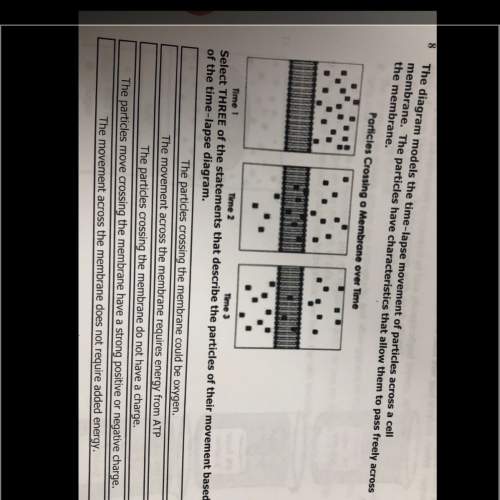
Biology, 06.02.2021 02:30 zoejacobs2002
Smog or Lukeg1 I need help on this
A mutation occurs in a mosquito. As a result, some of the mosquito's offspring are resistant to a chemical used to kill mosquitoes. They survive when the chemical is sprayed.
Explain why the mosquito's offspring have resistance to the chemical and whether the effect of the mutation is beneficial, neutral, or harmful to the mosquitoes.

Answers: 3
Another question on Biology

Biology, 21.06.2019 12:30
Apower plant recently purchased land and will be building a large factory on wetlands in florida. which of these is not an environmental effect of destroying these wetlands? question options: destroying the wetlands will create a loss of habitat for many species. destroying the wetlands will create flooding. destroying the wetlands will create species to relocate to a new area. destroying the wetlands will change the climate in this area.
Answers: 1

Biology, 21.06.2019 15:00
Asnail, elodea (aquatic plant), or both were added to the tubes and they were stoppered. tubes were placed under a grow light for 24 hours and the results recorded. the test tubes were then covered for 24 hours to produce a dark environment and the results recorded. which statement best explains the change in test tube d from the light setup to the dark setup.
Answers: 3

Biology, 22.06.2019 01:30
Scenario 5 1) take 10 red and 10 black beans and place them, mixed, on the table. record the starting phenotype # and frequencies (% of your total population) of your starting population in the table provided (generation 0). 2) act as a predator. “capture” as many organisms as you can until you have reduced the population to three organisms. put them aside. at this point, the predators die. 3) the remaining organisms each produce 2 clonal offspring. multiply your organisms accordingly and allow them to mix on the table. calculate and record the resultant phenotype # and frequencies (% of your total population) of your population in the table provided (generation 1). 4) repeat the reproduction event, allowing each of your organisms to produce 2 clonal offspring. calculate and record the resultant phenotype # and frequencies (% of your total population) of your population in the table provided (generation 2). 5) repeat the reproduction event, allowing each of your organisms to produce 2 clonal offspring. calculate and record the resultant phenotype # and frequencies (% of your total population) of your population in the table provided (generation 3).
Answers: 1

You know the right answer?
Smog or Lukeg1 I need help on this
A mutation occurs in a mosquito. As a result, some of the mosqui...
Questions


Mathematics, 27.12.2019 07:31


Mathematics, 27.12.2019 07:31


History, 27.12.2019 07:31

Health, 27.12.2019 07:31




Mathematics, 27.12.2019 08:31


English, 27.12.2019 08:31


Mathematics, 27.12.2019 08:31


Mathematics, 27.12.2019 08:31

Computers and Technology, 27.12.2019 08:31


Spanish, 27.12.2019 08:31




